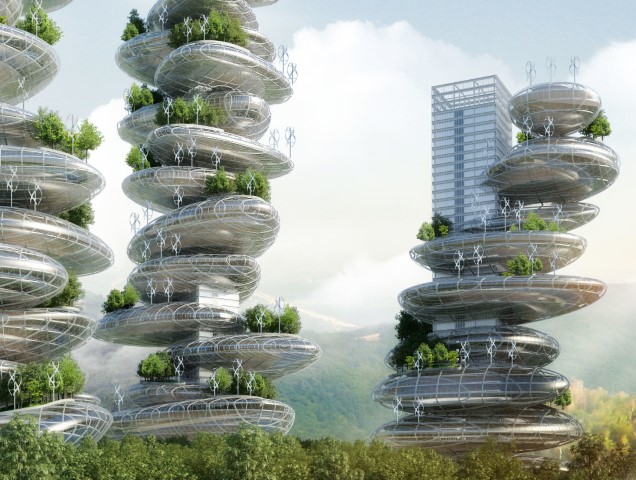Since sustainable modular homes are flexible, economical, and environmental friendly they are becoming more and more popular in the always evolving disciplines of modular architecture and engineering.
This article addresses sustainable modular housing floor plans, prices, and particular designs like beach house and residential modular homes. Architects and engineers with a keen interest in wellness interiors and green structures should particularly read short read. It provides comprehensive knowledge and stimulates your design and execution.
House Plans for Modular Homes
One of the most appealing aspects of wellbeing modular homes are their customizable housing plans. Whether you’re looking for a tiny urban home or a huge family home, modular house designs may be tailored to meet your needs and preferences.
Customizable Modular Design
Build in sections, or modules, eco friendly modular homes may be combined in a multitude of ways to provide customized and practical floor layouts. Its adaptability allows engineers and architects to design homes that specifically suit the requirements of their customers and the conditions of the location. Single-story ranch-style homes to multi-story contemporary architecture are among the almost endless possibilities.
Sustainable Materials and Practices
Eco friendly modular homes often use sustainable practices and sustainable materials. In addition to improving indoor air quality, using recycled and renewable materials reduces their impact on the environment. Using sustainable materials like bamboo, reclaimed wood, and low-VOC paints, architects are creating greener, healthier homes.
Innovative Features of Sustainable Prefab Homes
Sustainable modular homes may have many modern conveniences added to them to increase their comfort and utility. Energy efficient modular homes defy traditional home design in many ways, including the use of energy-efficient windows, cutting-edge insulation, and smart house technology. Apart from improving the lives of the inhabitants, these attributes over time save a significant amount of energy.

Average Modular House Price
One of the key advantages of modular homes is their affordability. Compared to traditional stick-built homes, modern sustainable prefab homes are often much less costly to construct initially and to maintain over time.
Cost Breakdown
The usual price of a modular house may vary greatly depending on a variety of factors, such as size, location, degree of design intricacy, and quality of materials. Generally speaking, a modular home will cost you between $100 and $200 per square feet. This price typically includes the modules, delivery, and on-site assembly.
For instance, a 2,000 square foot modular home would cost you between $200,000 and $400,000. The enormous cost advantages associated with modular building are shown by the fact that a comparable-sized traditional home might cost as much as $500,000.
Factors Influencing Cost of Modularized Architecture
For a multitude of reasons, the total cost of a modular home may be more. They include:
Location: The cost of site preparation and transportation may increase if buildings are constructed in remote or difficult-to-reach areas.
Customization: In general, more expensive designs with eye-catching details or high-end finishes will be heavily customized.
Site Preparation: Factors like soil quality and slope may have an impact on the cost of preparing a construction site for development.
Long-Term Savings
Because modular homes need less maintenance and energy, they may save money over time in addition to being less expensive initially. Throughout the life of a house, energy-efficient features and robust construction materials might translate into lower power bills and lower maintenance costs.

LEED Certification for Modular Design in Architecture
One globally recognized symbol of environmental achievement is the LEED certification, which modular housing design may get. When erected permanently, sustainable modular housing may meet the LEED project’s need to be immovable and permanent. The certification system thoroughly assesses the design, construction, operations, and maintenance methods of a building. This ensures that the building excels in key areas such as energy efficiency, water conservation, and interior environmental quality. Furthermore, a house that has obtained LEED certification not only increases its value, but also promotes the well-being of both individuals and the environment.
WELL Certification for Modular Housing Design
The WELL Building Standard prioritizes the health and well-being of people in buildings by promoting features that enhance air quality, water quality, nutrition, lighting, physical fitness, comfort, and mental health. Wellbeing modular homes that are WELL certified may significantly improve the overall health, productivity, and well-being of the people living in them. Enhanced air filtration, access to natural light, and ergonomic design components contribute to the promotion of both physical and mental well-being in a living environment. The WELL certification requirements for modular homes ensure that these constructions provide a holistic approach to promoting the health and well-being of occupants.
Beach House Modular Homes
Beach house modular homes are an intriguing submarket of modular homes. These homes combine the benefits of modular construction with the unique requirements and aesthetic appeal of coastal living.
Design Considerations
Building a modular beach house requires consideration of a number of crucial elements, such as:
- Resilience: Houses near the seashore must be able to endure bad conditions like strong winds, salt air, and even floods. Modular homes may have reinforced structures and weather-resistant materials used to ensure durability.
- Elevated Design: Elevated foundations are a typical element in beach house designs to both provide better views and stop flooding. Included into the design of modular homes are stilts, pilings, and elevated platforms.
- Coastal living often places a strong focus on the outdoors. Big decks, patios, and rooftop terraces are common features of modular beach houses designed to maximize outdoor living.
Popular Styles
Modular beach homes come in a variety of styles, from classic seaside cottages to sleek modern designs. A few popular looks are:
Cape Cod: These modular homes have a timeless beachside charm thanks to their shingle exterior, dormer windows, and tall roofs.
modern Coastal: Modern coastal modular homes emphasize natural light and unobstructed views and are characterized by large windows, open floor plans, and clean lines.
Nantucket: Nantucket-style modular homes combine traditional elements with contemporary comforts, often including wraparound porches, gabled roofs, and elegant interiors.
LEED and WELL Certification in Beach Houses
Beach house modular homes that receive LEED certification are certain to meet rigorous criteria for environmental responsibility and energy efficiency. The inclusion of enough natural light and enhanced indoor air quality as amenities in WELL certification standards might potentially enhance the health and well-being of tenants. These certifications ensure that modular beach homes are not only environmentally friendly but also promote a healthy lifestyle.

Residential Modular Homes
Family house modular housing design are perfect for growing families because of their spacious and flexible designs that may fit changing lifestyles.
Functional Floor Plans
Modular homes provide families with the advantage of designing useful floor plans that maximize available space and usefulness. Typical components of modular homes for families consist of:
Open floor plans with spacious living, dining, and kitchen areas are ideal for hosting family gatherings and entertaining.
Many Bedrooms and Bathrooms: Having a large number of bedrooms and bathrooms is essential for the family’s comfort. Just two of the several bedrooms that may be easily added to modular homes are master suites and guest rooms.
Dedicated Spaces: Designating specific areas for play, study, and leisure may help a family home become more functional. Playrooms, media rooms, and home offices are common additions.
Flexibility
Adapting the home to accommodate shifting needs is crucial as families expand and develop. Modular homes are advantageous in that they allow for the addition of extra modules or the rearrangement of existing ones. Modular homes provide families a very versatile and advantageous long-term investment.
Sustainability
For family homes, the main priorities should be sustainability and safety. Modern fire safety precautions, energy-efficient technology, and ecologically acceptable building materials may all be used in the construction of modular homes. These elements improve the sustainability of the living environment while also protecting the physical and emotional well-being of the occupants.

Examples of Modular Homes
To get a more profound understanding of the potential offered by modular dwellings, let us analyze some real-life examples and visual representations.
Urban Modular Home
An urban modular home may have a clean, contemporary design with plenty of windows and a roomy interior arrangement. Recycled steel framing and bamboo flooring are two examples of sustainable materials that may make a home more environmentally friendly. Automatic lighting and temperature control are two examples of smart home technologies that may improve convenience and energy economy.
Coastal Modular Home
A classic Cape Cod design modular home can include shingle siding, gabled roofs, and a wraparound porch. Raised on stilts to avoid floods, the home may include large windows and sliding glass doors to take in views of the sea. Examples of outside living areas that might provide additional areas for relaxing and entertaining include decks and patios.
Residential Modular Home
Numerous bedrooms, a large kitchen, and distinct areas for play and study are all possible features of a family-friendly modular design in architecture. By using durable, low-maintenance materials, you can ensure that the home will look fantastic despite the demands of daily family life. Energy-efficient appliances and equipment may reduce energy expenses while enhancing indoor air quality.
LEED and WELL Certified Modular Architecture
There are several ecological and wellness-focused features in a modular home that seeks to get both LEED and WELL certificates. Environmental sustainability is promoted by water-saving fixtures, solar panels, and energy-efficient HVAC systems; occupant health and well-being is enhanced by better air filtering, sufficient natural light, and ergonomic design elements. Along with meeting strict ecological standards, this home provides a nurturing and health-promoting living environment.
Conclusion
Modular design is an innovative approach to residential construction that provide several benefits compared to traditional building methods. Modular houses are highly suitable for meeting the varied needs of modern homeowners, such as achieving cost efficiency, promoting sustainability, and allowing for adaptation. Furthermore, they may be tailored to individual preferences. Modular houses provide a versatile and inventive answer for the future of housing, appealing to homeowners exploring their choices and architects or engineers in search of inspiration for their next projects.





